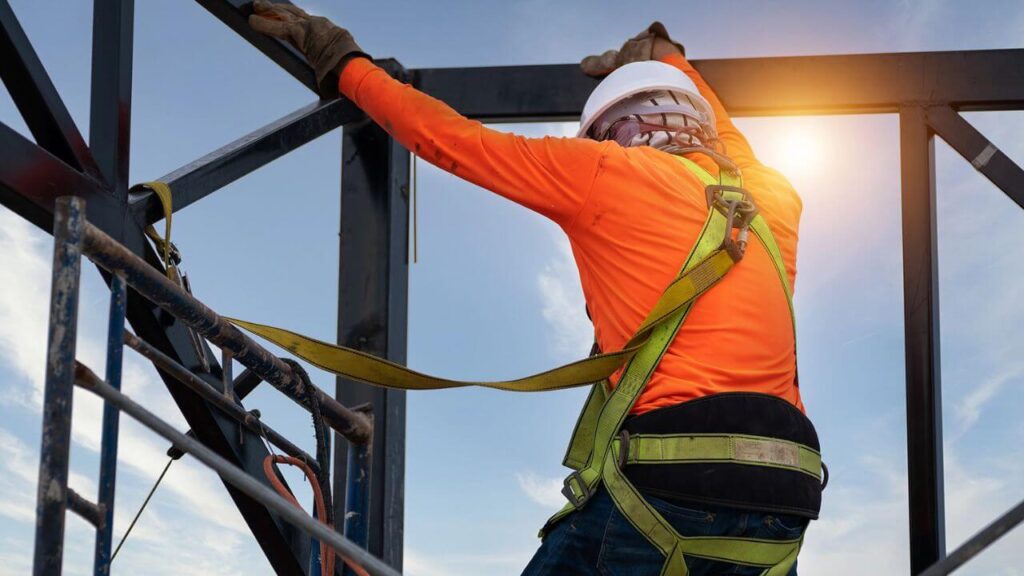According to the Health and Safety Executive (HSE), falling from height is the most common cause of death in the construction industry. However, it can be minimized by educating workers to take safety measures while working at height.
If you’re going to work in the UK construction industry, you need a CSCS green labourer card. The CSCS card can only be obtained by passing the health, safety and environment (HS&E) test. Working at height is important, and approximately 5 to 7 questions are asked in the CSCS test.
This CSCS test revision note covers all the questions from working at height. If you are going for the CSCS operative test or any health and safety test, these short revision points will help you answer most questions from working at height.

CSCS Test Revision Note: Working At Height
- The leading cause of death in the construction industry is falling from height.
- The term “Working at Height” refers to any situation where a fall could cause injury, regardless of a specific measurement, such as 5 meters or 10 meters above the ground.
- If you need to store materials on a working platform, you must ensure the platform can support the weight of the stored items and that they are stored securely to prevent them from falling.
- If you need to use podium steps, remember that they are not entirely safe and can topple over.
- If you are about to use a ladder and discover it is damaged, do not use it. Inform your colleagues and report it to your supervisor.
- You should avoid painting ladders because the paint can conceal damaged areas and cause accidents while working at height.
- If you need to place a ladder against a wall, ensure it is positioned at a 75° angle because it’s the safest position for ladder placement against the wall.
- Tie it firmly at the top to secure your ladder and ensure it doesn’t slip. This will provide additional stability and prevent unwanted movement while using it.
- If you ever need to use a mobile tower scaffold, ensure the wheel brakes are working. If they are not working, you should not use that scaffold.
- A ladder should only be used in a workplace if you are performing light tasks for a short duration.
- If you need to use a ladder for a task, you are responsible for inspecting it beforehand.
- Whenever you are on a ladder, you must ensure that it maintains at least three points of contact at all times.
- When working on a flat roof, installing a guard rail and toe-board along the edge is the best way to prevent falls.
- Tube and fitting scaffolds should only be erected or dismantled by individuals who are trained, competent, and authorized to perform these tasks.
- If you need to work on a mobile elevating work platform, ensure you attach your harness lanyard to the designated anchor point on the platform.
- If you need to cross a fragile roof, you should use crawling boards with handrails.
- If you are working at height and want to protect the people below from falling tools and materials, use brick guards to prevent any items from falling over.
- If you need to use a mobile tower scaffold, ensure the ground is stable and level. Soft or uneven ground can compromise the scaffold’s stability and safety.
- If you need to use a ladder to reach a scaffold platform, ensure that the ladder extends 5 rungs above the platform and is securely tied.
- If you need to reach the working platform of a mobile tower scaffold, use the built-in ladder on the tower.
CSCS Example Questions on Working at Height
- What is the leading cause of death in the construction industry?
- What is the safest position for placing a ladder against a wall?
- What must you do before using a ladder for a task?
- What must you ensure if you need to store materials on a working platform?
- What should you check before using a mobile tower scaffold?
- How should you ensure your safety when using a mobile elevating work platform?
- Why should you be cautious when using podium steps?
- What should you do if you find a ladder is damaged before use?
- Why is it not recommended to paint ladders?
- How should a ladder be positioned to reach a scaffold platform safely?
- At what angle should a ladder be placed against a wall?
- How can you secure a ladder to prevent it from slipping?
- Who should erect or dismantle tubes and fitting scaffolds?
- What should you use to cross a fragile roof safely?
Conclusion
Hopefully, these short revision notes will help you answer the working at height question in the CSCS test. Our revision key points have helped thousands of people get their CSCS cards, and they work in the construction industry. Remember these last-minute revision points before entering the CSCS test, and share your valuable feedback with us.
